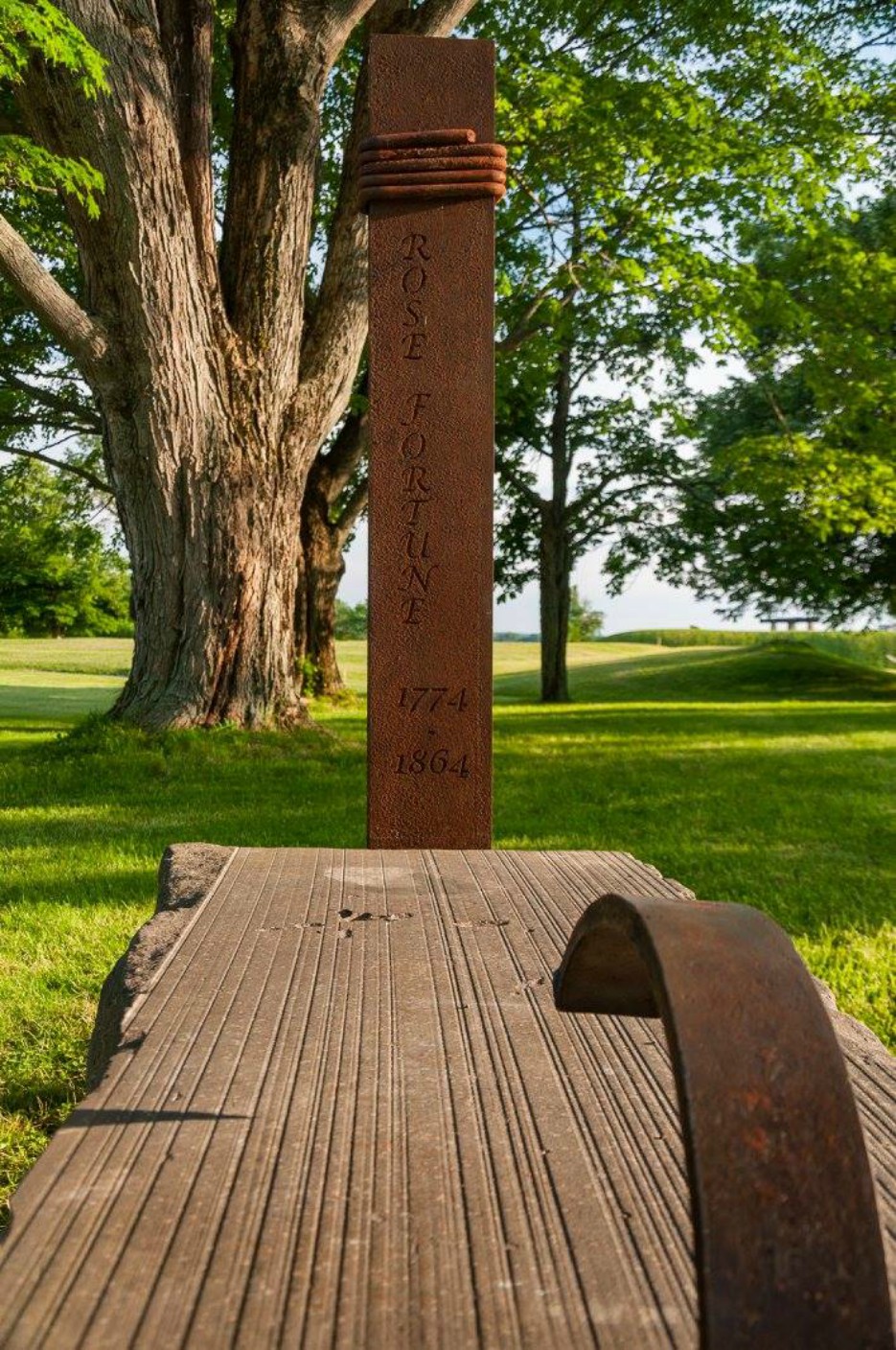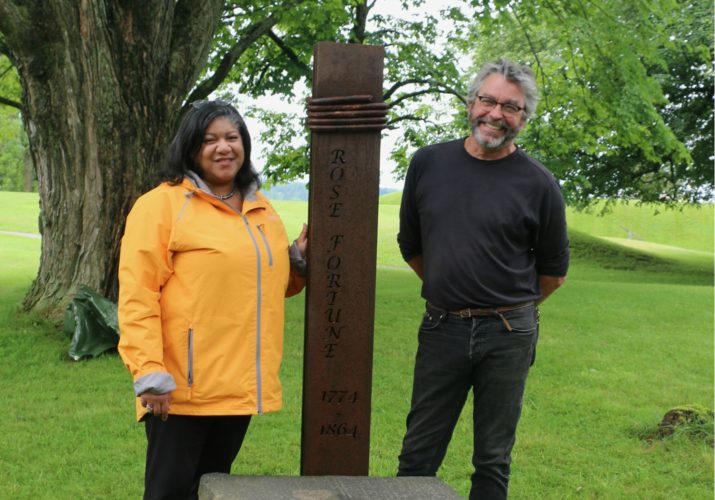History
Rose Fortune recognized as national historic figure
A campaign to recognize Rose Fortune was successful 154 years after her death

caption
Rose Fortune sculpture by Annapolis Royal artist Brad Hall.
caption
Descendent of Rose Fortune, Juanita Peters, stands with the Rose Fortune monument made by Annapolis Royal sculptor Brad Hall.She was a slave in the U.S., then a Black Loyalist in Nova Scotia. Now, 154 years after her death, Rose Fortune is a national historic figure.
The Historical Association of Annapolis Royal got the news last month after four years of waiting.
“I have been telling Rose Fortune’s story for many years and I have always felt it was a story that should be recognized across the country,” says Alan Melanson.
Melanson is part of the Historical Association of Annapolis Royal team that submitted Fortune’s name to the Historic Sites and Monuments Board of Canada on Nov. 10, 2014. They received a letter confirming her designation from the board and minister of Environment and Climate Change on Jan. 12.
Annapolis Royal entrepreneur
Rose Fortune came to Nova Scotia in 1884 at the age of 10 with her father. He had fought alongside the British during the American Revolution, earning freedom for himself and his family as a Black Loyalist.
By the age of 12, Fortune started her own transport business, using a wheelbarrow to carry luggage between the docks to nearby homes and hotels in Annapolis Royal. As her business grew she became known as a waterfront constable. That designation led some to consider her Canada’s first black police officer.
In time, she was able to start a second business, which was a rudimentary call service for the local inns. Her transportation business carried through her descendants under the name Lewis Transfer Company until 1980.
Her status was so substantial in the community that she was allowed to have her portrait painted. At the time, a black woman wouldn’t have received what was then considered a high honour.
Sharing Fortune’s story
Melanson has told Fortune’s story during a nightly candlelight graveyard tour for 26 years, and daily on a historic district tour for 18 years. He told The Signal Tuesday it is important to share Fortune’s story because women are often left out of history.
“I think anybody can identify with a woman who has gone through hard times, faced adversity and (has then) overcome,” he said.
The telling of Fortune’s story by candlelight also inspired New York playwright George Cameron Grant to write his award-winning play, “Fortune.”
Fortune died in 1864 and was buried in an unmarked grave. A memorial gravestone made by Annapolis Royal sculptor Brad Hall was unveiled last July.

caption
Twenty-one of Rose Fortune’s descendants smile in front of the sculpture crafted in her honour in Annapolis Royal.On Tuesday, The Signal also spoke to Juanita Peters, great-granddaughter of Fortune, who attended the gravestone’s unveiling last summer.
“For any woman, not just a black woman, to perform the role of police and entrepreneur is really something,” says Peters.
She says having the designation is not only significant to Fortune’s descendants, but to the town of Annapolis Royal and the province as a whole.
“I hope this encourages others to keep telling their stories and that it gives all those educators throughout Nova Scotia and across the country, more ammunition to fight for stories that tell the whole history of Canada and the shepherds who led us here,” she says.
The Historical Association of Annapolis Royal expects to receive a plaque detailing Fortune’s national historic figure status at a celebration in July.
Future Rose Fortune events will be posted on the association’s website.

